The 18 strangest planets in the Universe
Space is a very strange place, huge, cold and very unknown. Despite the fact that science has managed to advance significantly in terms of methods for observing the vast firmament, we barely know, or believe we know, 4% of the cosmos.
This means that the vast majority of all cosmic phenomena and objects are something unknown to the human species. Will we get to know them all? It is doubtful, but certainly the little that has been discovered to date is something truly striking.
Next we will see the 18 strangest planets in the Universe, the phenomena that make them so peculiar and how far they are from our home planet.
- Related article: "The 30 best phrases of Carl Sagan (universe, life and science)"
The 18 strangest planets in the Universe, and their characteristics
Earth is a strange planet if we think about it carefully. It is a cosmic body that is harboring life, something that to date has not been found on any other planet, although many assumptions have been made that it exists on other worlds.
However, removing this, the rest of terrestrial phenomena are not so striking if we compare them with those of other worlds.
There are planets with mineral storms, extreme temperatures, and ridiculously small orbits. Next we will discover the 18 strangest planets in the Universe.
1. Kepler-16b, twin of Tatooine
When George Lucas introduced Tatooine, a planet with two suns, in his Star Wars saga, he was a true visionary.
Although in Kepler-16b you could not live like in Tatooine, it does share having two king stars. On this planet there are two sunrises and two sunsets. and, if we can ever get there, we will certainly enjoy spectacular views.
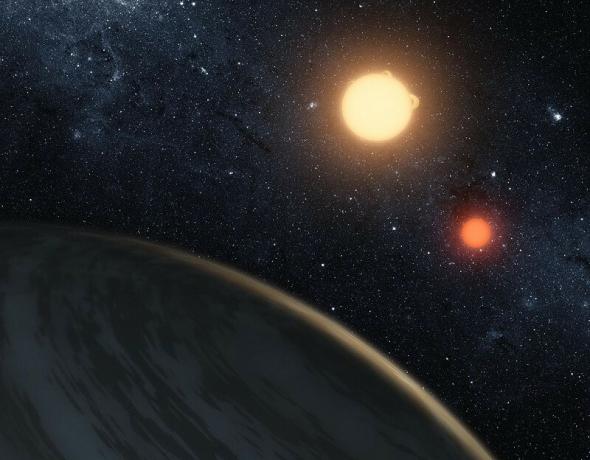
2. Kepler-64b, the planet with four suns
But if the previous planet had two suns like Tatooine, the next one surpasses it, why settle for two when you can have four? Kepler-64b, also called PH1, is a planet where up to four stars can be seen in its sky.
It orbits a binary system, which in turn has another system revolving around it. That is to say, Kepler-64b revolves around two stars which, in turn, have two other stars revolving around them. This is called the circumbinary system, and it's really weird.
Life as we know it is an unattainable dream at PH1. It is a giant planet, formed by gas with a radius more than 6 times that of the Earth, and with a mass 170 times greater than that of our planet.
3. Kepler 36c and Kepler 36b, two very close planets
Kepler 36c and Kepler 36b are two planets with almost identical names, and this already tells us how close they are.
Both orbit a star at very similar distances, almost in the same orbit. One does so at about 19 million kilometers, while the second is about 17.5 million kilometers from its star.
Every 97 days Kepler 36c and Kepler 36b undergo a conjunction, that is, they the distance between them is so close that they practically touch each other (barely 2 million kilometers). If we could be on one of these planets we would see the other planet in its sky, although the view would not be the same.
If we were on Kepler 36b we would see Kepler 36c as a giant celestial body, much larger than the Moon. On the other hand, if it were the other way around, we would see Kepler 36b of a size similar to that of our satellite.
- You may be interested in: "The 8 planets of the Solar System (ordered and with their characteristics)"
4. Do you want to be rich? Go to HAT-P-7b
The universe is a magical, mysterious and immeasurable place. So big that our wildest dreams and fantasies can come true. Who has not wished for precious stones to fall from the sky? This is a reality in HAT-P-7b.
This planet is one of the most distant elements discovered to date, being more than 1,000 light years from Earth in the constellation Cygnus. In its dark part it rains corundum, which is a mineral formed by aluminum oxide from which rubies and sapphires are formed.
Although at the moment we cannot travel to that wonderful world in which we would make gold, well, rather corundum, we can be satisfied with knowing that it exists. To all this, this was the millionth cosmic object discovered by the Hubble telescope.
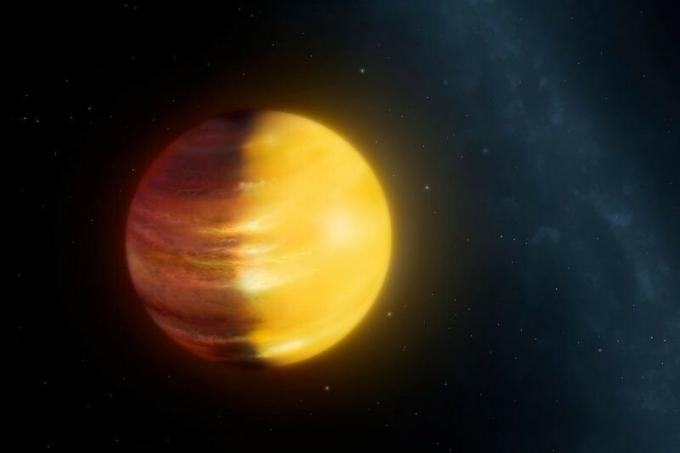
5. PSR B1620-26 system: the planets that orbit a pulsar
Until a few years ago, astronomy took it for granted that neutron stars or pulsars, caused by supernovae, destroyed everything around them, including their planets.
However, the discovery of PSR B1620-26 proved otherwise. This is a binary system that is located in the constellation of Scorpio, and is made up of a pulsar, a white dwarf star, and a planet whose mass is greater than that of Jupiter.
There shouldn't be any planet here, but there is., which turns out to be a phenomenon, strange and, at the same time, beautiful.
6. J1407b, the planet of the rings
J1407b is a planet 434 light years from Earth and what is striking about its appearance is that it has incredible rings. In total it has about 37 rings and, if this planet were in our Solar System, we could see them in the sky, and it is even possible that they would look better than the full Moon.
These rings span 120 million kilometers and are between 200 and 640 times larger than those of Saturn. In fact, They are so big that inside they contain a satellite, larger than Mars..

7. The little, little Kepler 37b
Kepler 37b is an exoplanet located 215 light years from Earth. Is Ua tiny, tiny planet with a diameter of 3,865 kilometers, slightly larger than the Moon. Its orbit around its star lasts about 13 days and is made up of rocky materials. It is considered to have no atmosphere.
8. Osiris and his long tail
HD 209458 b, informally called Osiris, is a truly peculiar planet. Its atmosphere is composed of hydrogen, oxygen and carbon and evaporation has been detected in it.
This is why astronomers believe that this planet loses mass to radiation from its star, producing a gigantic tail of 200,000 kilometers which is believed to be responsible for having lost up to 7% of its mass.
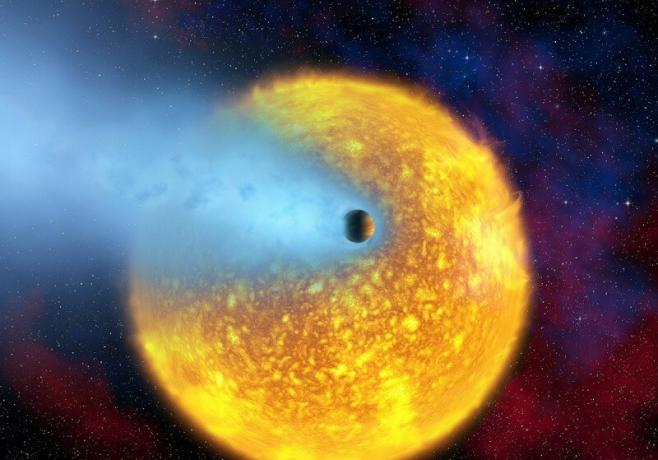
9. Kepler 7b and its inexplicable density
Kepler 7b is a very large planet, twice the size of Jupiter. Despite this, this exoplanet stands out for having half the density of Jupiter, in fact, It is one of the least dense elements discovered to date..
It has a tenth of the density (0.166 g/cm³) of that of water (1g/cm³), which is something very striking. It turns out that, to date, there is no scientific law that makes sense of this fact, so Kepler 7b has an inexplicable density, for the moment.
10. In HD 106906 b winter has not come
HD 106906 b is a very strange planet located 300 light years from Earth. Despite being located 97,000 million kilometers from its star (very, very far), science still has the unknown of how it can be that it is not frozen.
In fact, on this planet it is quite warm, at a pleasant temperature of 1,500 ºC. Given its distance, this could not be possible, but the hypothesis has been considered that since it is an exoplanet of recent formation would still be warm and, therefore, that permanent winter would not yet have arrived as is the case with Pluto.
11. 55 Cancri e and his very precious heart
Lying about 40 light-years from Earth and twice the size of our planet, 55 Cancri e is a truly valuable planet.
Its orbit is just 18 hours, which in itself is quite amazing. Its temperature is hellish, 2,000 degrees, which of course is a fact that does not leave anyone indifferent. But what is most striking is its core, a heart made of diamond.
This mineral represents a third of the total mass of the planet, while the rest, especially its surface, is made up of graphite. Thus, we can say that this planet, mostly composed of carbon-based elements, is a world with a very valuable heart.
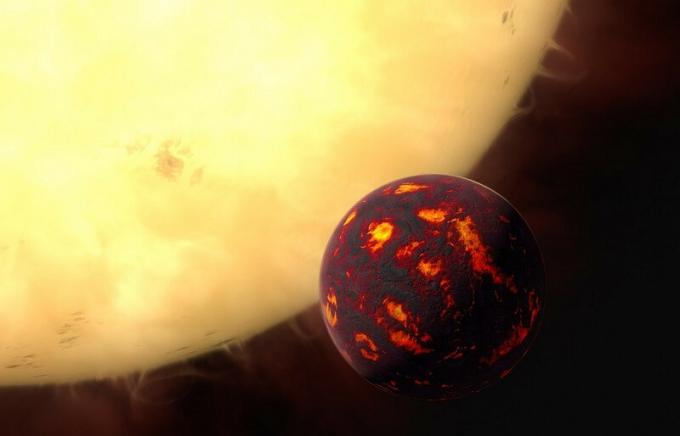
12. Ogle-2005-Blg-390lb, an icy paradise
Ogle-2005-Blg-390lb attracts attention, not only because of its convoluted name, which seems more like a programming error. Located 20,000 light years away, in the constellation of Sagittarius, this planet has nothing to envy to Winterfell or the icy kingdom of Frozen.
It is very far from its star king, a red dwarf, from which it receives hardly any heat. That is why it rarely has temperatures above -220 ºC, being a frozen desert in which life is highly unlikely, or at least on its surface.
It has been hypothesized that, although it would be difficult on its surface, in its core there could be enough heat to melt the internal ice and form a huge underground ocean. It is believed that the heat would be generated by the gravitational attraction of its moons, which give it a certain temperature.
13. Gliese 436b, an ice hell
Gliese 436b is a paradoxically hellish planet. It is relatively close to our planet, only about 30 light-years away, and was one of the first exoplanets found to contain water.
The curiosity of this is that it would be difficult to find non-evaporated water on this planet, since its average temperature is 439 ºC. It is very close to its star, about 15 times closer than Mercury is to the Sun.
But not only does it have water, it is that this water is frozen! There is ice at their poles. Incredible as it may seem, there is a physical explanation: this planet has such a strong gravity that it compresses the water vapor and transforms it into ice.
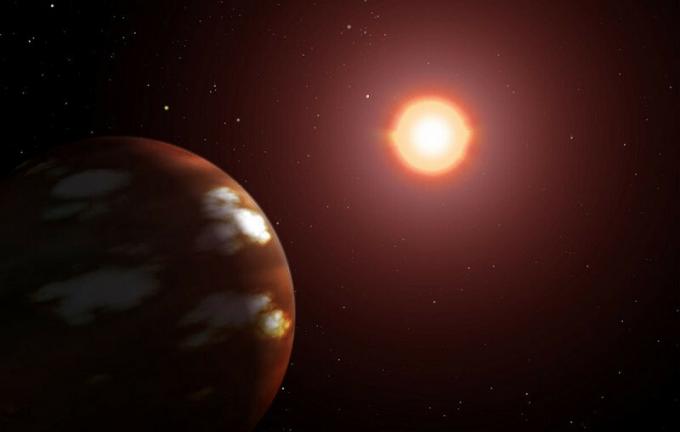
14. HD 189773b, in beauty you will find violence
HD 189773b is located 62 light years from our planet. It is only slightly larger than Jupiter and has a very beautiful deep blue hue, a product of its strange atmosphere made up of silicate molecules.
But beyond its beautiful surface hides a violent, hostile and ugly world. With winds reaching 8,600 km/h and temperatures of 900°C it is not a very pleasant planet to live on. And as if that were not enough, rainy days are truly aggressive, because Due to atmospheric silicate particles in HD 189773b it rains hurtful glass.
15. The old Psr B1620-26 B
Although Psr B1620-26 B is not as old as the Universe, it is almost as old as it is. This planet is about 13 billion years old, three times as old as Earth and just a billion years younger than the Big Bang.
It formed around a young star, similar to our Sun, and orbits two already dead stars in a cluster where more than 100,000 stars can be found.
16. WASP-12b: the egg-shaped planet
WASP-12b is an exoplanet very close to its star, so close that it only takes one day to complete its orbit around it.
But it's not just the fact that in that one year literally goes by as fast as a day. Due to its force of gravity, this planet has a shape similar to that of an egg..
17. TrES 2b and its darkness
TrES 2B is one of the most mysterious planets ever found. It is located about 450 light years from our planet and, to date, it is the darkest known planet.
It does not reflect even 1% of the light that reaches its surface. This planet is a gas giant, containing a high presence of sodium and potassium in its visible spectrum.
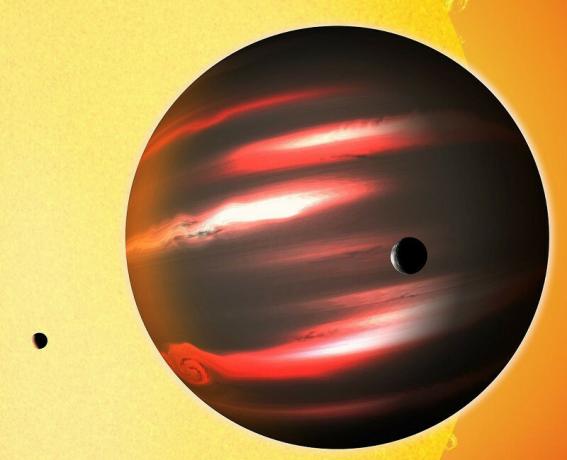
18. In GJ 504 b pink is worn
Like a planet from the Ratchet & Clank universe, where brightly colored worlds rule, GJ 504 b is a strikingly pink planet. This planet, of relative youth, glows from the heat of its recent formation.
Apart from being the paradise of Paris Hilton, the striking thing about this planet is that it has four times the mass of Jupiter, being the exoplanet with the lowest mass detected directly through telescopes.
Final reflection
The Universe is such a vast place that it is doubtful that the human species will fully understand it before we go extinct. On how many of those worlds will there be life? How is life there? What seemingly impossible things happen in such distant worlds? If there is a pink planet, another in which it rains rubies and sapphires and another with four suns, of course, everything that we can imagine is possible up there.
Bibliographic references:
- Wolszczan, A.; d. TO. Friar (1992). A planetary system around the millisecond pulsar PSR1257+12. Nature 355: 145-147.
- Brown, a. g. TO.; et al. ( 2018). Gaia Data Release 2: Summary of the contents and survey properties. Astronomy & Astrophysics. 616.
- Carter, J. TO.; et al. (2012). Kepler-36: A Pair of Planets with Neighboring Orbits and Dissimilar Densities. Science. 337 (6094): 556–559.
- Bodenheimer, P.; Stevenson, D.; Lissauer, J.; D'Angelo, G. (2018). New Formation Models for the Kepler-36 System. The AstrophysicalJournal. 868 (2): id. 138 (17pp.)


